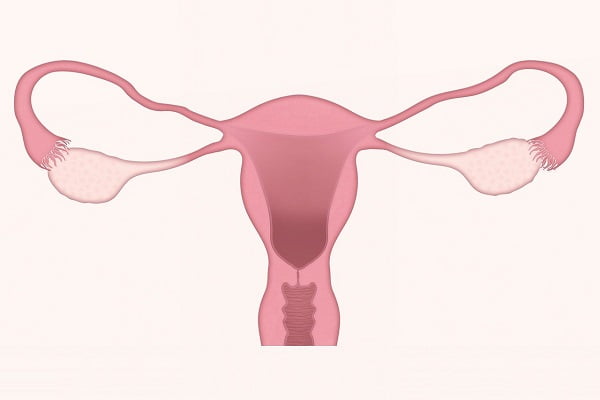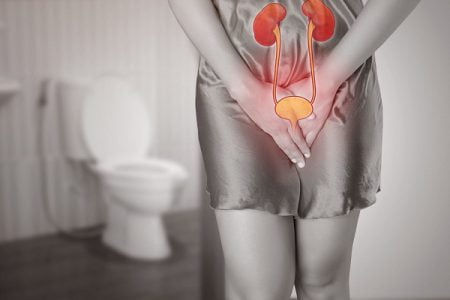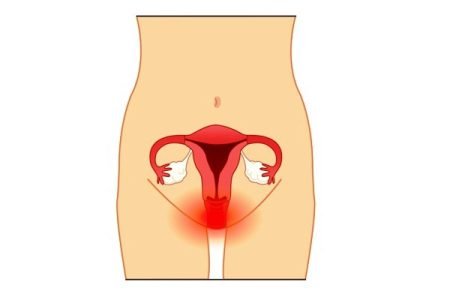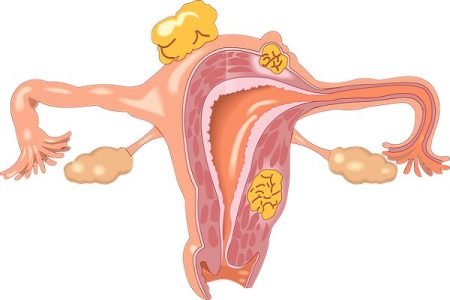
Uterine fibroids are abnormal muscular growths that form on the wall of the uterus. They may also grow into the abdominal and endometrial cavities. Usually, uterine fibroids are non-cancerous growths and result in symptoms like heavy menstrual bleeding, pain in the lower back and pelvic region, abdominal enlargement, and frequent urination.
Some women with uterine fibroids do not present any symptoms at all. Rarely, uterine fibroids may turn into cancerous fibroids and result in vaginal bleeding in menopausal women.
Is There any Correlation Between Uterine Fibroids and Cancer?
Earlier, it was considered that there is no correlation between uterine fibroids and uterine cancer, but some recent studies suggest that women who are at an increased risk of developing uterine fibroids are also at an increased risk of uterine cancer.
This research has been misinterpreted that there is a strong link between uterine fibroids and cancer. It simply reveals that menopausal women (between 50 to 60 years of age) are likely to suffer from both non-cancerous uterine fibroids and uterine cancer because it is an already known fact that menopausal women are more prone to both uterine cancer and benign fibroids.
Till now there is no strong evidence about a direct correlation between uterine fibroids and cancer. Uterine cancer caused due to fibroids is very rare, with only 1 in 1000 cases of uterine fibroids being cancerous.
Can Uterine Fibroids Lead to Cancer in Women? How Can we Find if our Fibroid has Become Cancerous?
Fibroids are benign abnormal growths of the uterus and the majority of women develop them within their lifetime. Fibroids can turn into cancers in rare cases, almost 1 in 1000 cases. Fibroids are also known as leiomyoma and if they become cancerous, they are called leiomyosarcomas.
Fibroids are formed due to uncontrolled cell division that goes unchecked by the body and ultimately results in abnormal tumor formation (a ball of muscle). The uncontrollably dividing cells undergo a process called mitosis. These cells undergoing mitotic divisions have different nuclei than normal cells.
Pathologists often count these dividing cells of fibroids under a microscope. These dividing cells are called mitotic figures. When at least 10 mitotic figures are found in a fibroid under a high-power lens microscope, it is said to be cancerous. Cancers hiding in the fibroids can have dangerous consequences.
Doctors often break apart your fibroids if they are larger in size. If your fibroids are cancerous and they are broken apart due to their large size, the broken pieces may spread and grow, and complicate your prognosis. Therefore, fibroids should be checked for any cancerous growth before breaking them apart.
Although there are fewer chances that fibroids may turn into cancer, still you should be careful while going for morcellation (breaking of fibroids) or myomectomy (fibroid removal).
Patients suspected of cancer should go with traditional hysterectomy rather than morcellation or myomectomy.
When Should You Worry About Your Fibroids?
Fibroids are generally non-cancerous and can be left untreated in certain cases where they are completely harmless. However, in some women, even asymptomatic fibroids need to be closely observed or surgically removed especially if they are rapidly growing in size which is the characteristic of uterine cancer tumors. In such cases, the fibroids should be closely monitored and removed if required.
It should be remembered that even some diagnostic imagining tests like MRI, ultrasound are unable to differentiate the rapidly growing cancerous cells in fibroids from non-cancerous cells. So you should be extra careful.
Cancer Risk may be Increased by Uterine Fibroid Procedure
Large-sized uterine fibroids are often removed or broken down into pieces through various procedures like myomectomy, and morcellation.
Morcellators use small blades to break down the fibroids into small pieces so that they can be removed with a small incision. However, this process could be dangerous because if the tissue being removed turns out to be cancerous, the blading process will spread that cancerous tissue around the body, which may in turn worsen cancer and reduce the chances of a patient’s prognosis for recovery from cancer.
For this reason, the FDA discourages the use of morcellation during the removal of fibroids via hysterectomy or myomectomy to avoid the spread of hidden cancers within the fibroids. Another reason for avoiding morcellation is that currently there is no reliable method for predicting whether a woman with fibroids may have a uterine sarcoma or not.
Factors that may Increase Your chances of Cancer from Fibroids
Following are some of the factors that may increase your chances of cancer if you already have fibroids:
- Women above the age of 50 are at a higher risk of developing uterine cancer from fibroids.
- Women with large sized fibroids may have higher chances of cancer.
- Women who have undergone power morcellation procedure for fibroids are at a higher risk of turning their fibroids into cancer compared to other women who have undergone a simple hysterectomy or myomectomy surgery.
- Women who are anemic may also be at cancer risk.
How Can You Prevent Your Fibroids From Developing Into Cancer?
Fibroids turn into cancers in rare cases. However, you should still be careful and make sure that your fibroids don’t become cancerous.
Following are some of the ways by which you can prevent your fibroids from turning into cancer:
- Avoid power morcellation during your hysterectomy or myomectomy surgery
- Ensure that your fibroids are not becoming over-sized
- Get your fibroids checked for any cancerous growth at least once in a month
- Keep an eye on your fibroid symptoms and immediately report to your gynecologist if you notice any unusual symptoms
- Eat a healthy diet
- Go for pre-surgery cancer screening for your fibroids






